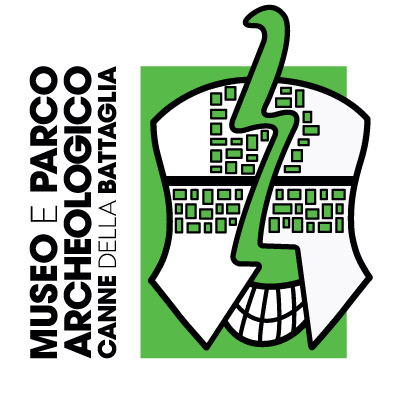Antiquarium and Archaeological Park of Canne della Battaglia
 The site of Canne della Battaglia, whose memory is linked to the famous battle between the Romans and the Carthaginians from 216 BC, stands on the hills that dominate the valley of the Ofanto river, where the settlement prospered from the Neolithic to the Late Middle Ages.
The site of Canne della Battaglia, whose memory is linked to the famous battle between the Romans and the Carthaginians from 216 BC, stands on the hills that dominate the valley of the Ofanto river, where the settlement prospered from the Neolithic to the Late Middle Ages.
Background
In the area frequented since the Neolithic, we find the first groups of huts dating back to the Bronze Age Middle in correspondence of the terraces that allowed the control of the Ofanto river.
Starting from the sixth century. to. C. the Daunian settlement developed on the hills, with the construction of important buildings representative of the aristocratic elites in the area, in addition to the burial ground.
The area was consistently populated until the third century BC. C., while no archaeological documentation has yet been found regarding the battle of 216 a. C., to which the memory of Canne is linked.
The main hill, the Citadel, was continuously occupied in the late antique and medieval period: here, after the destruction of Canosa in 872, the bishopric was established, entrusted in 1100 to St.Ruggero and maintained until 1300.
After the conquest and partial destruction by Roberto il Guiscardo, the territory of Canne della Battaglia was annexed to that of Barletta by Charles II of Anjou in 1303.
Antiquarium
The Antiquarium, located at the foot of the fortified citadel, was built in 1958 to house and preserve the finds from excavations conducted in the area and surrounding territory.
In 1999, the set-up was renewed in compliance with the new educational needs, presenting the history of population in the area, from the Neolithic to the organization of indigenous settlements, up to the events of the medieval era.
The current exhibition itinerary, inaugurated in 2017, contains the mapping of the places and events expanding the spaces of territorial memory and inviting to create stories and narratives following the fundamental historical stages: the first experiences of the Neolithic civilization; the formation of protohistoric communities; the construction of social groups of Daunian culture; the historical discourse of the transformations linked to the presence of Rome in the territory of northern Puglia; the events of the medieval civitas until the abandonment of Cannae.
The interpretative design of the itinerary, substantially chronological and thematic, involves the public of visitors in a continuous projection, from the spaces of the museum area to the great scenery of the battle between Romans and Carthaginians; all enriched by the multimedia room and the spaces dedicated to didactics and knowledge of the archaeological heritage.
The park, with the remains of the ancient Daunian settlement and the structures from the Roman, early Christian and medieval eras, today offers visitors an articulated and fascinating tour that unfolds in two itineraries: the first leads to the main hill, where the arx of the Latin sources and the medieval town could be found, along with the Castle and the Basilica. The second itinerary leads to the Paleochristian Basilica, to the area of Daunian dwellings with cave tombs, the furnace and the medieval burial ground.
Info and Contacts
Director: Ezia Torelli
+39 0883/510993
Email: drm-pug.museocannedellabattaglia@cultura.gov.it
Contact us for more information
The fields marked with (*) in addition to the acceptance of our Privacy and Cookie Policy, are required to send the message.





